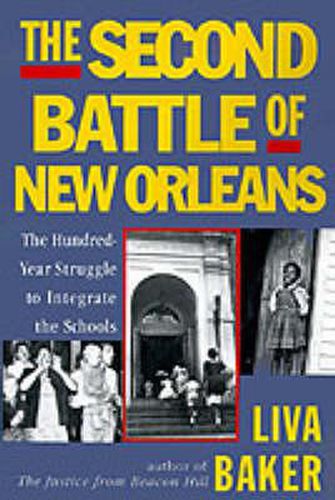Readings Newsletter
Become a Readings Member to make your shopping experience even easier.
Sign in or sign up for free!
You’re not far away from qualifying for FREE standard shipping within Australia
You’ve qualified for FREE standard shipping within Australia
The cart is loading…






Two, four, six, eight, we don’t want to integrate rose in a descant above the cacophony of insults and obscenities shrieked by a crowd of angry white women in pincurlers and toreador pants lining the sidewalks leading to the William Frantz Elementary School in a blue-collar section of New Orleans. Their chanting set the pace for a six-year-old black girl, who thought it sounded like a nursery rhyme, to march toward the redbrick building on the sultry, sullen morning of Monday, November 14, 1960. Until that moment, the student body of the William Frantz Elementary School had been entirely white.The little girl’s name was Ruby Bridges. She was braving the crowd’s hostility because her mother, the daughter of Mississippi sharecroppers, who could read a little and write a very little, wanted it better for (her) kids. (John) Steinbeck described Ruby in his best-selling Travels with Charley as the littlest Negro girl you ever saw, dressed in starchy white, with new white shoes on feet so little they were almost round. As tomatoes, rotten eggs, and spittle whizzed over her head, barely missing her, she looked, said Steinbeck, like a frightened fawn. The hair ribbon on her pigtail bobbed up and down exuding a perkiness nobody felt.
$9.00 standard shipping within Australia
FREE standard shipping within Australia for orders over $100.00
Express & International shipping calculated at checkout
Two, four, six, eight, we don’t want to integrate rose in a descant above the cacophony of insults and obscenities shrieked by a crowd of angry white women in pincurlers and toreador pants lining the sidewalks leading to the William Frantz Elementary School in a blue-collar section of New Orleans. Their chanting set the pace for a six-year-old black girl, who thought it sounded like a nursery rhyme, to march toward the redbrick building on the sultry, sullen morning of Monday, November 14, 1960. Until that moment, the student body of the William Frantz Elementary School had been entirely white.The little girl’s name was Ruby Bridges. She was braving the crowd’s hostility because her mother, the daughter of Mississippi sharecroppers, who could read a little and write a very little, wanted it better for (her) kids. (John) Steinbeck described Ruby in his best-selling Travels with Charley as the littlest Negro girl you ever saw, dressed in starchy white, with new white shoes on feet so little they were almost round. As tomatoes, rotten eggs, and spittle whizzed over her head, barely missing her, she looked, said Steinbeck, like a frightened fawn. The hair ribbon on her pigtail bobbed up and down exuding a perkiness nobody felt.